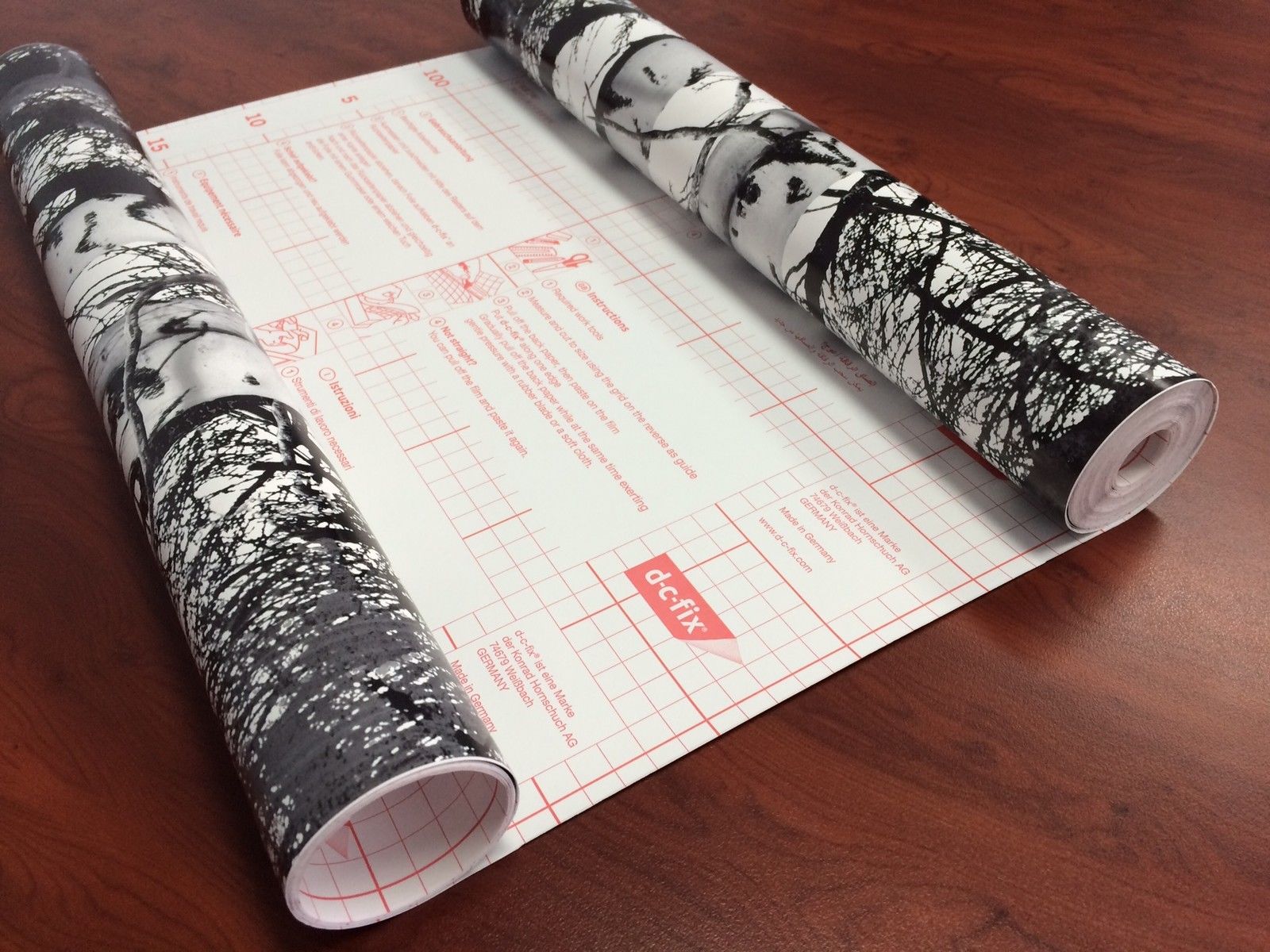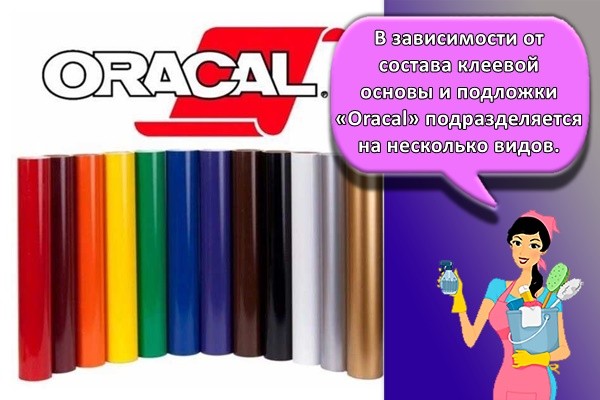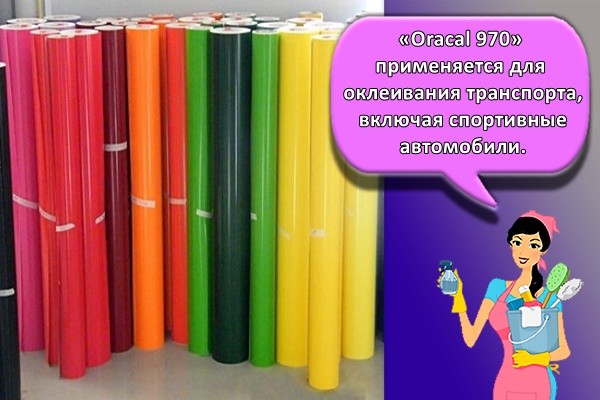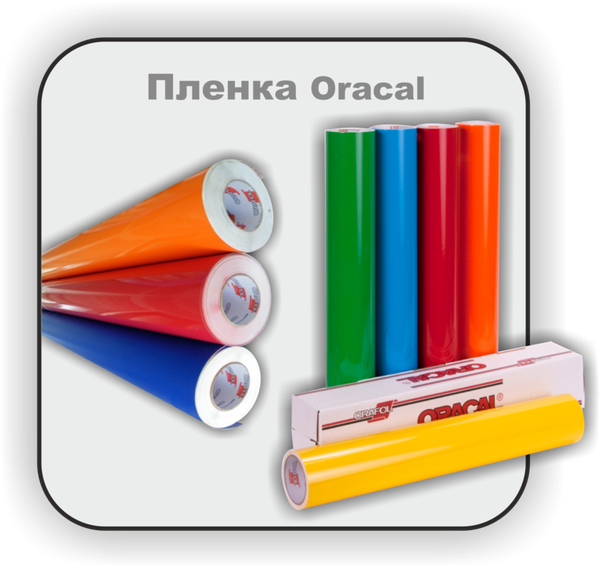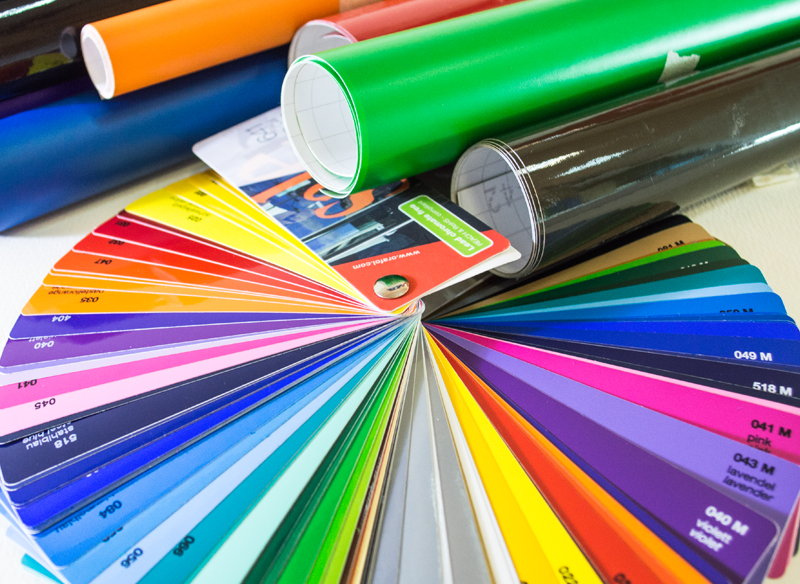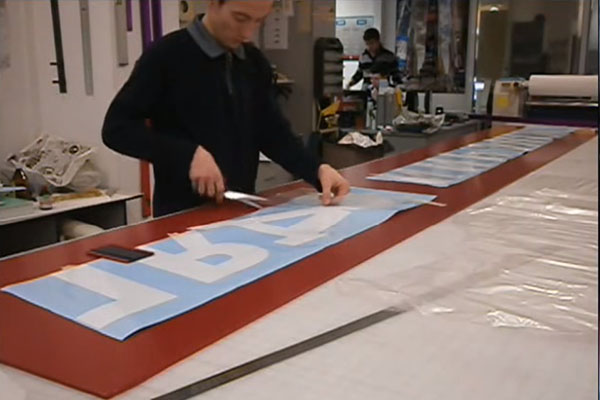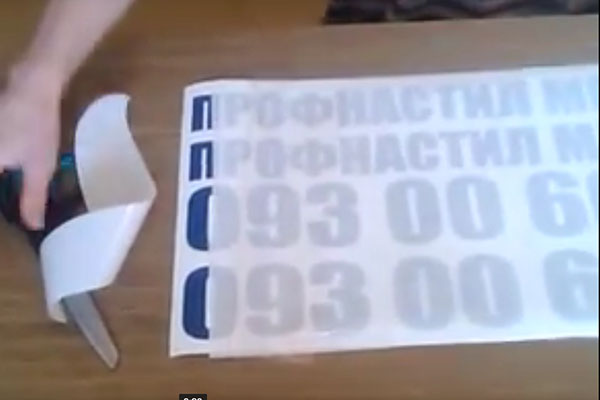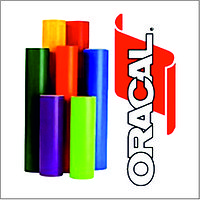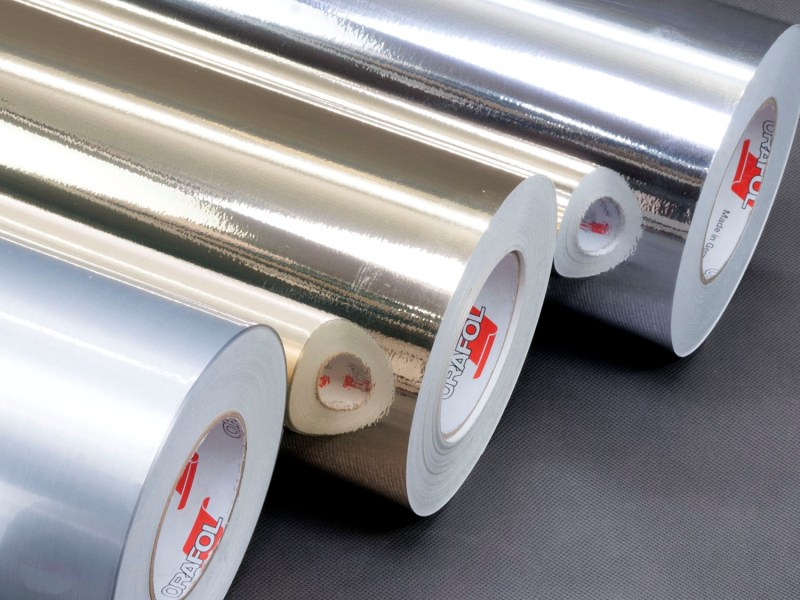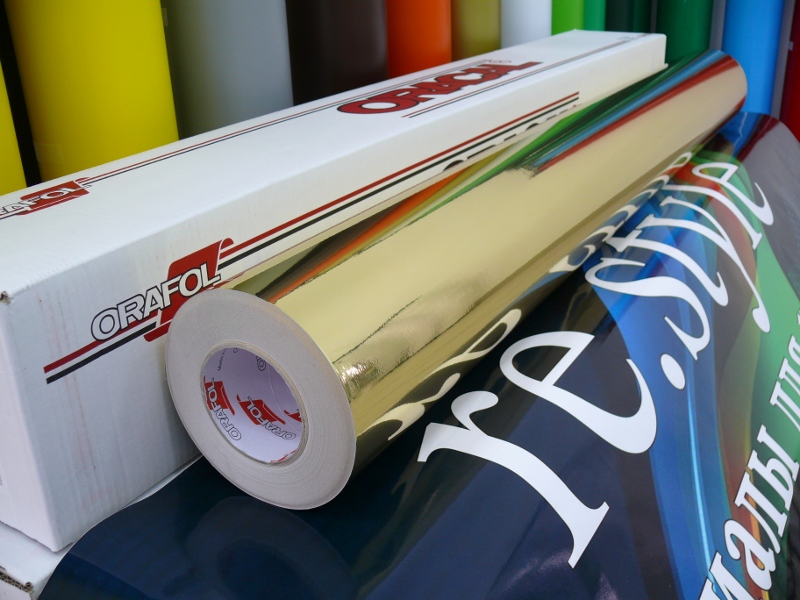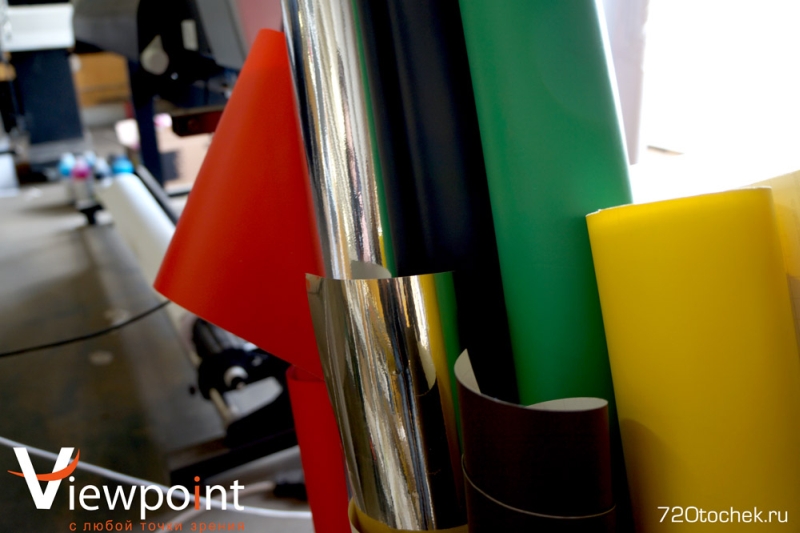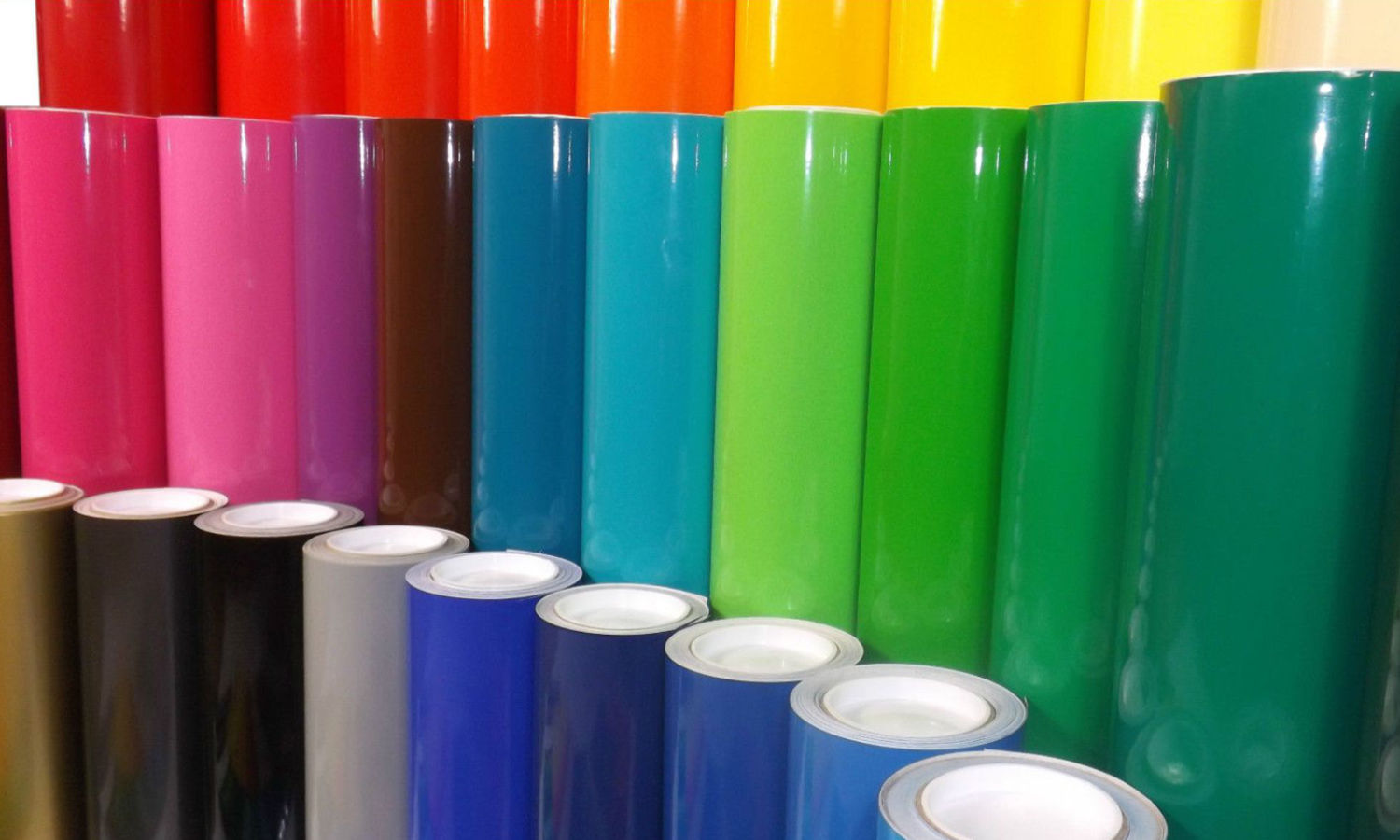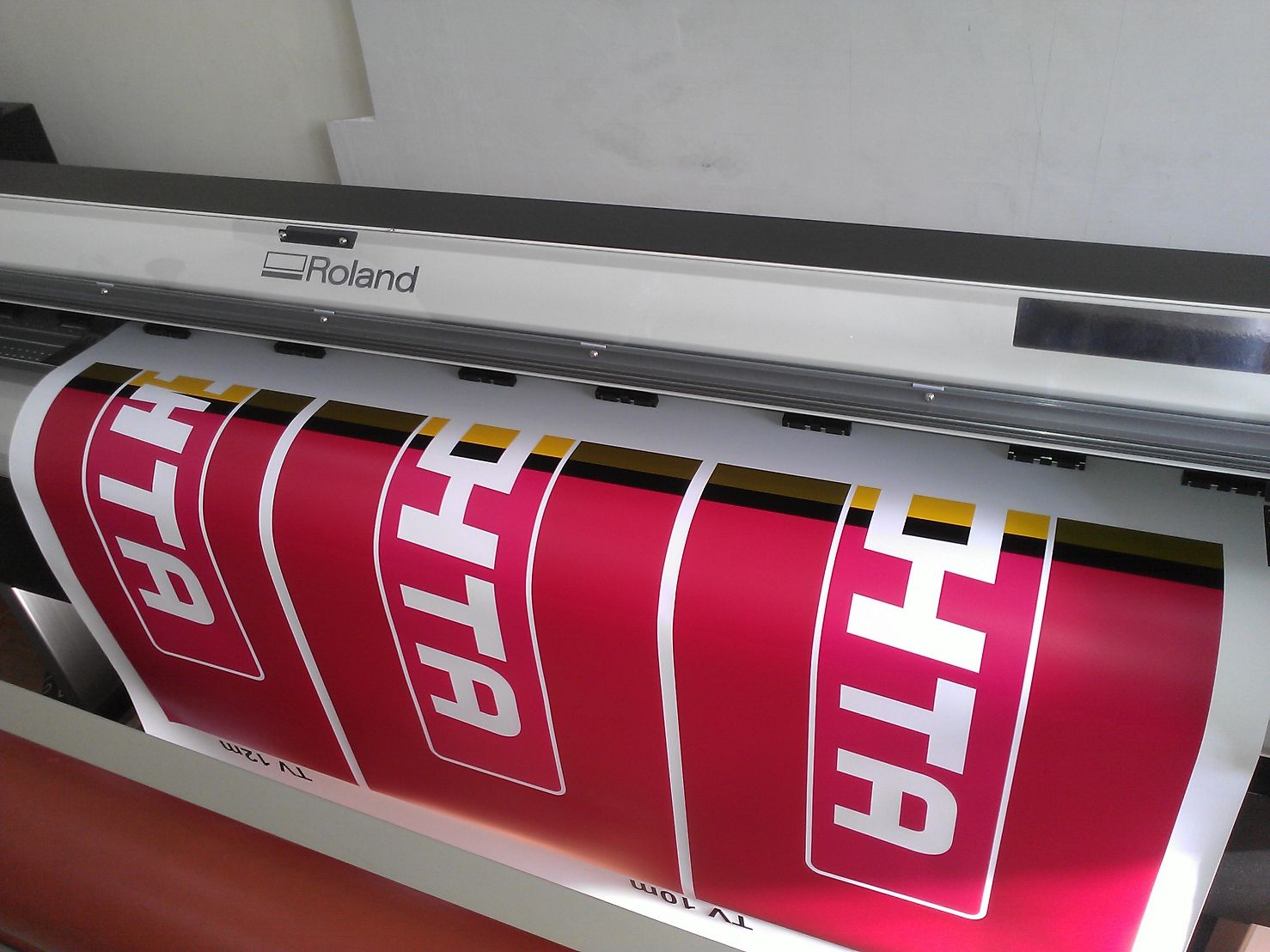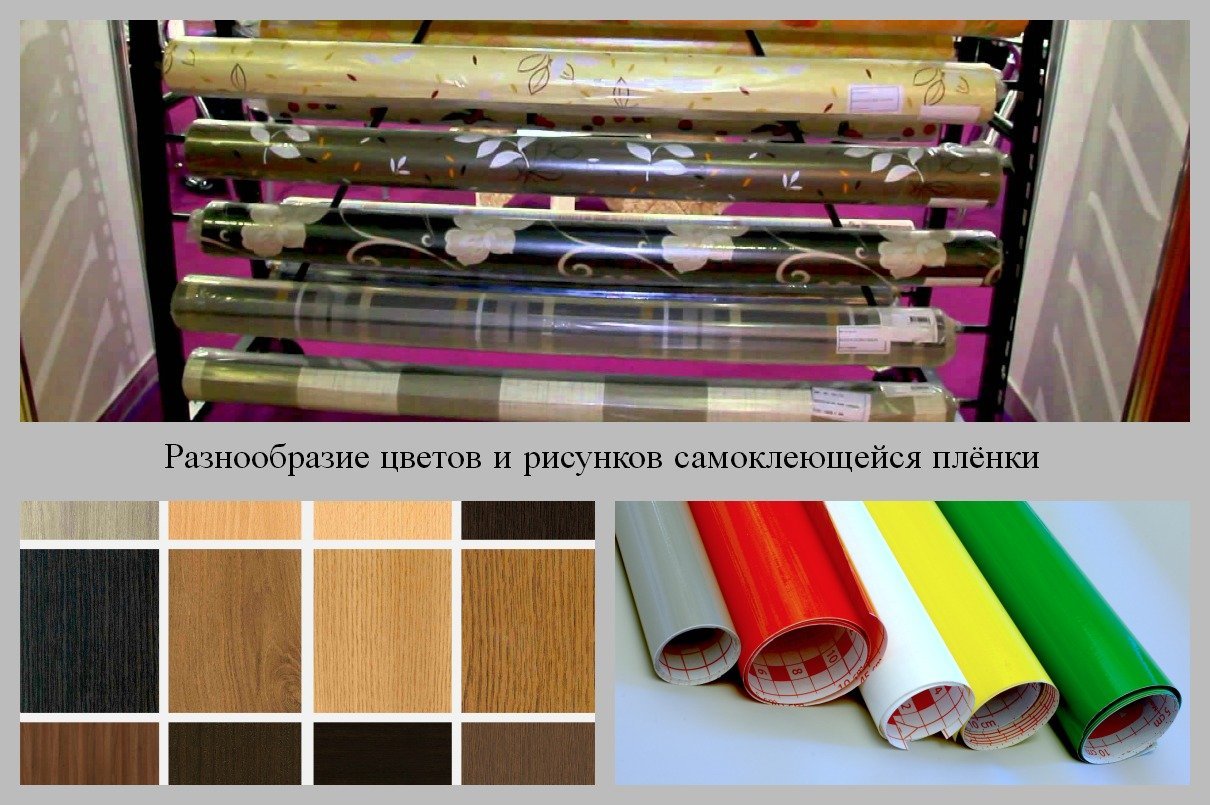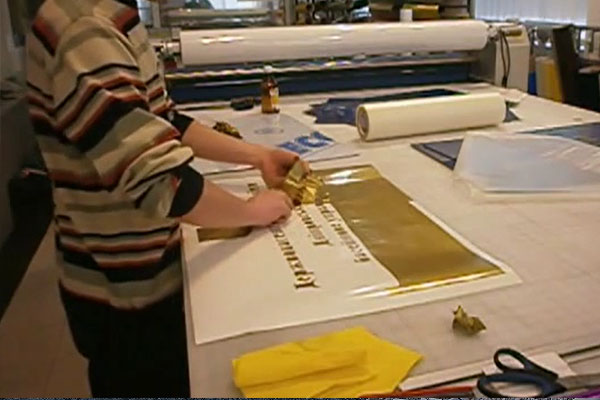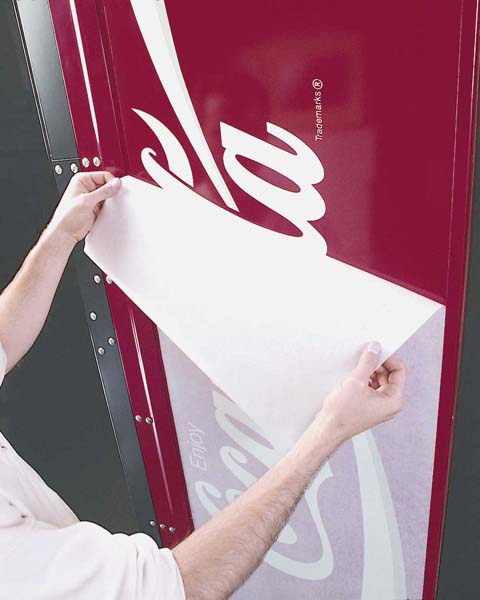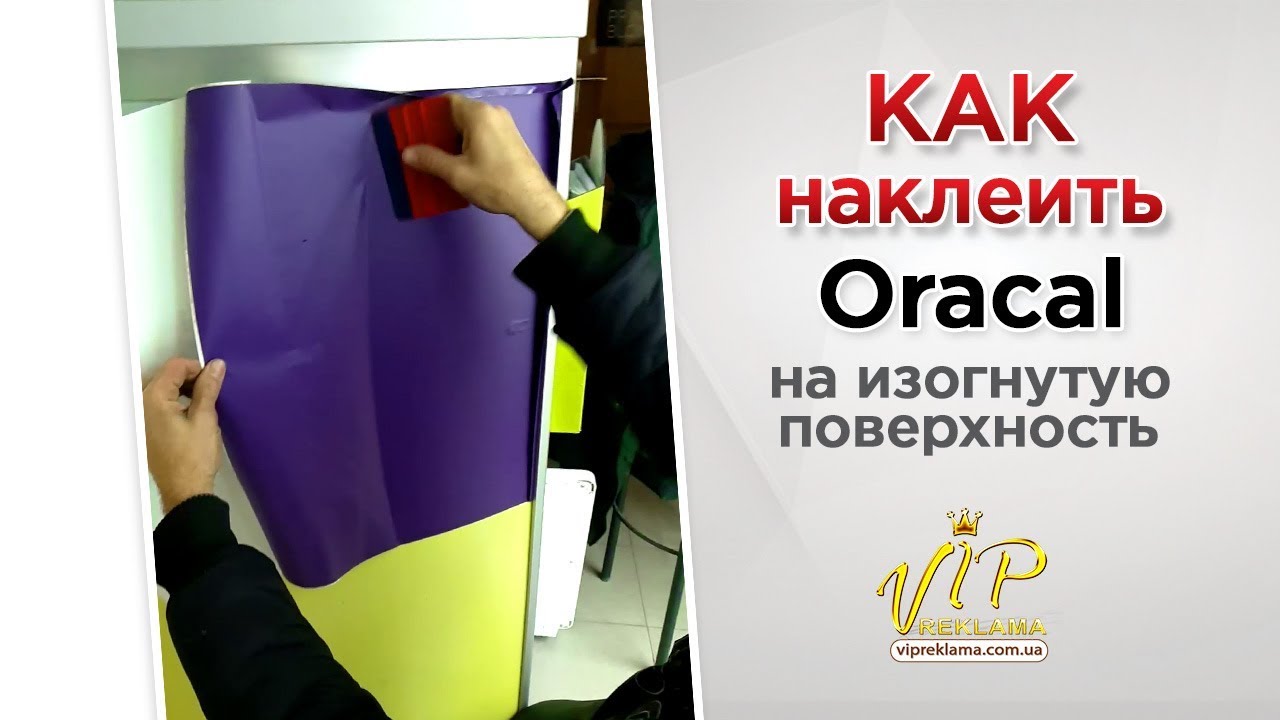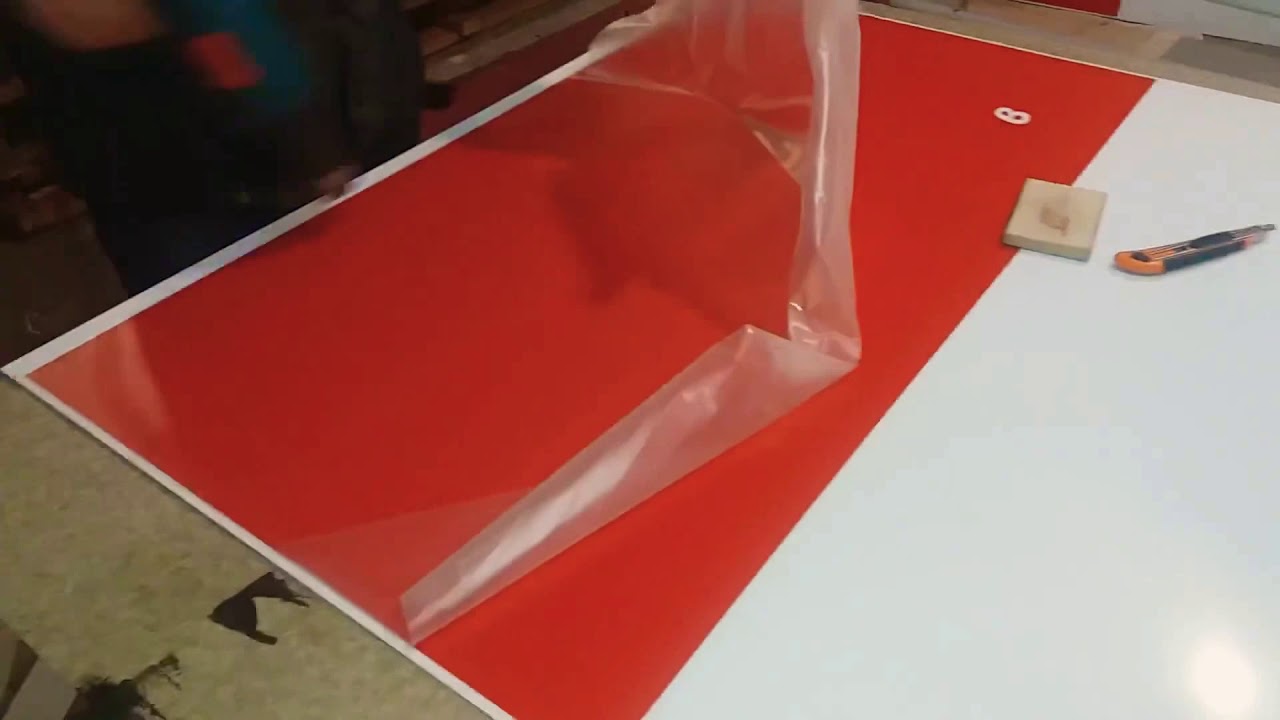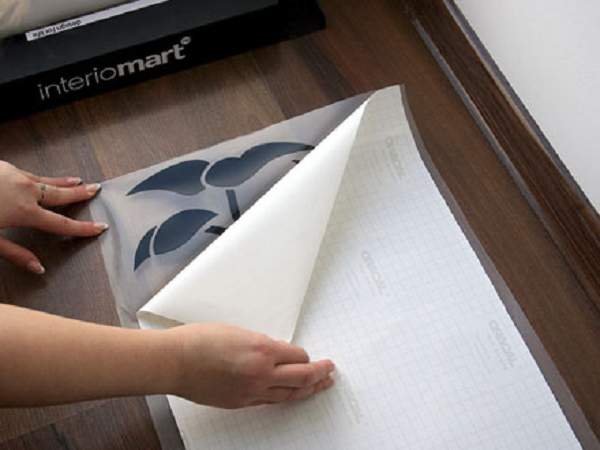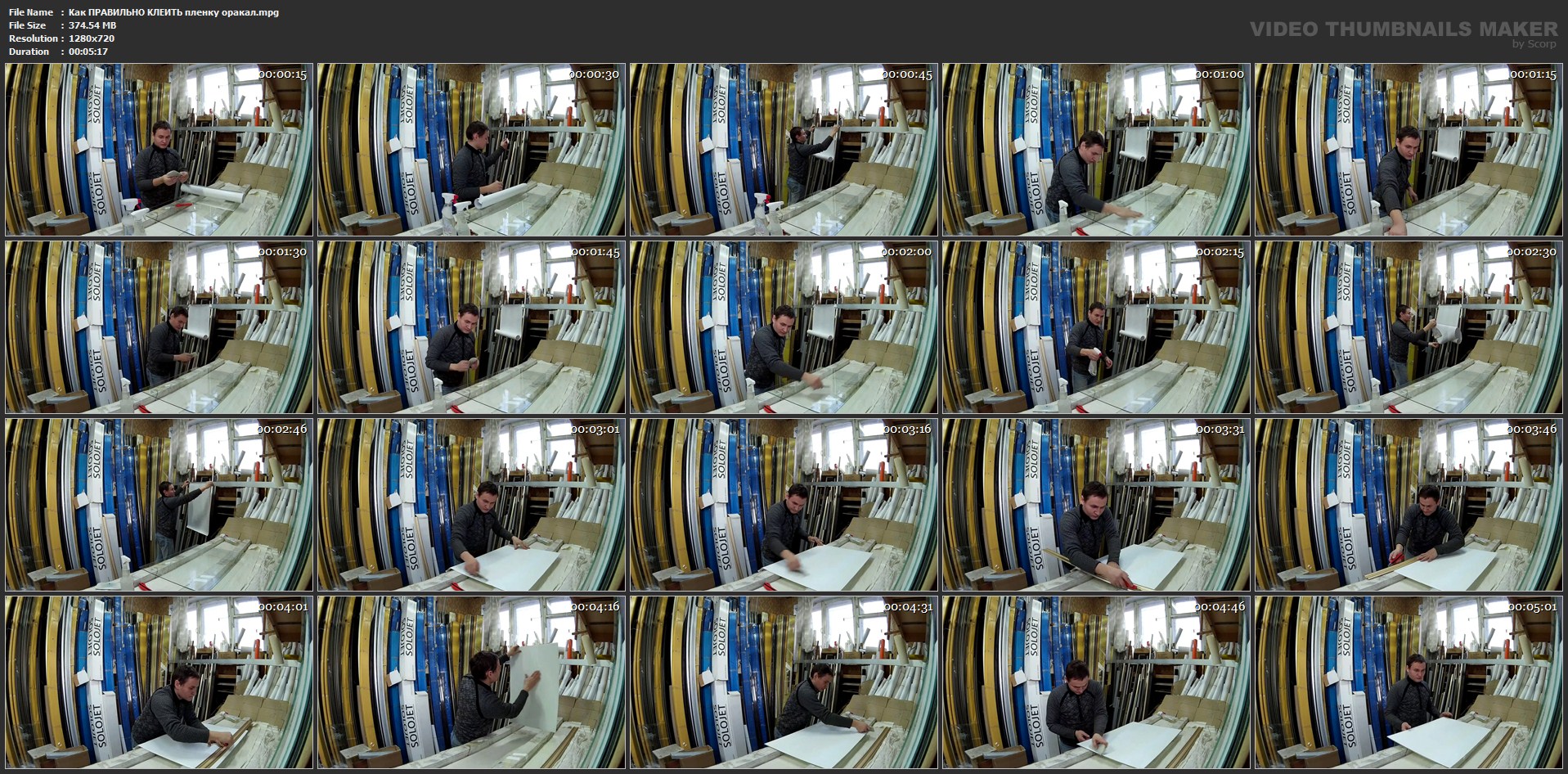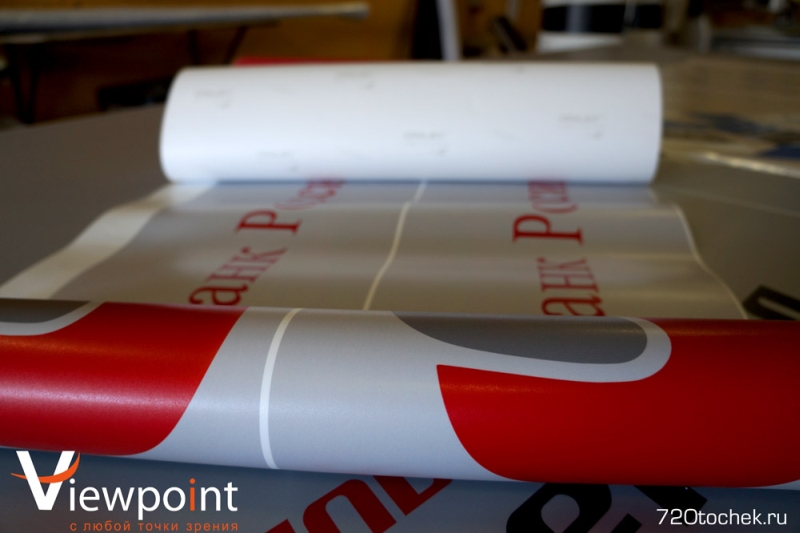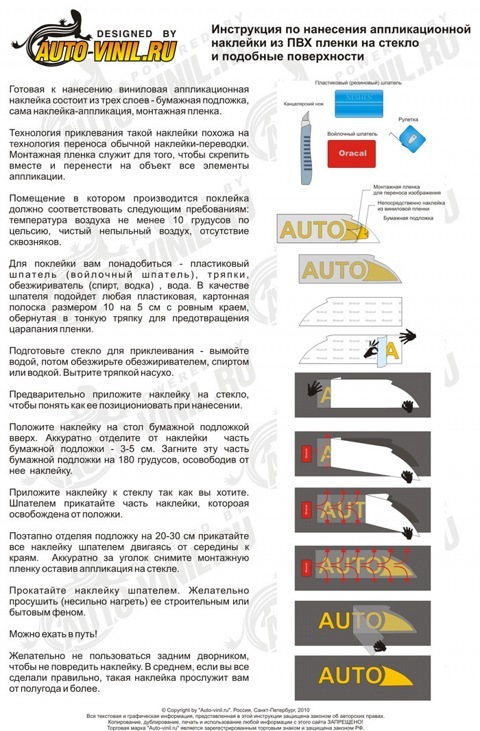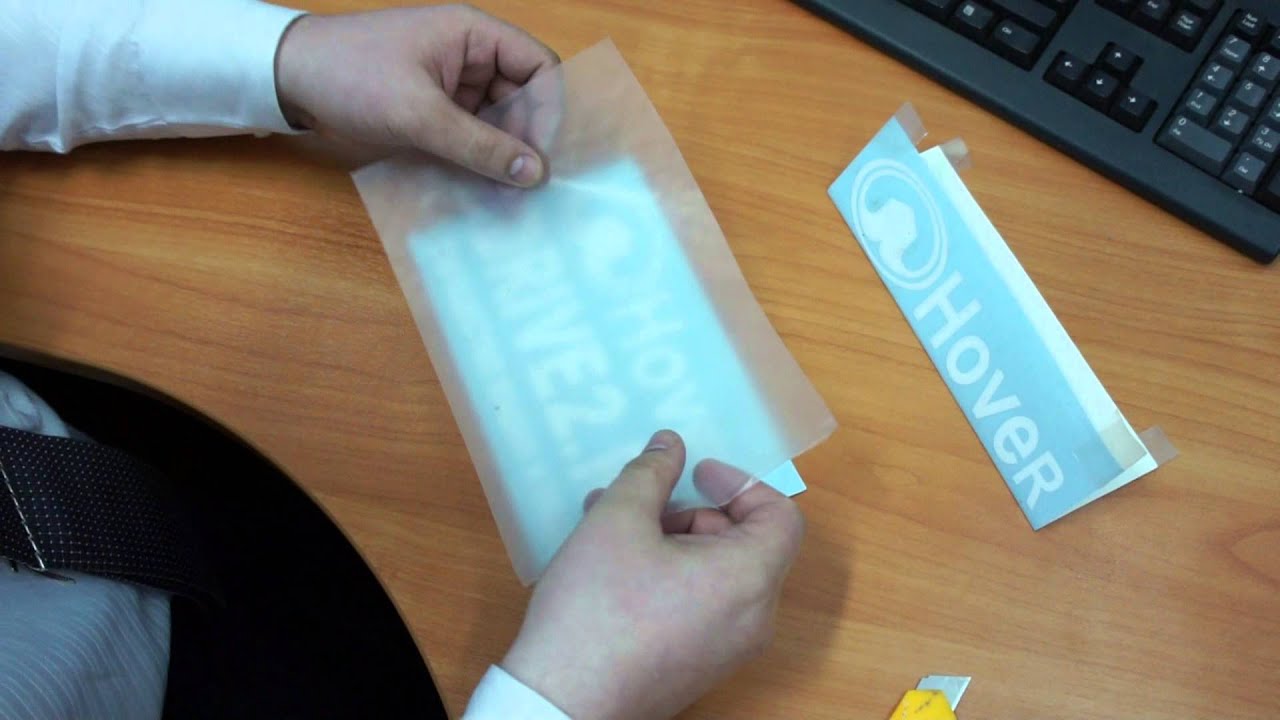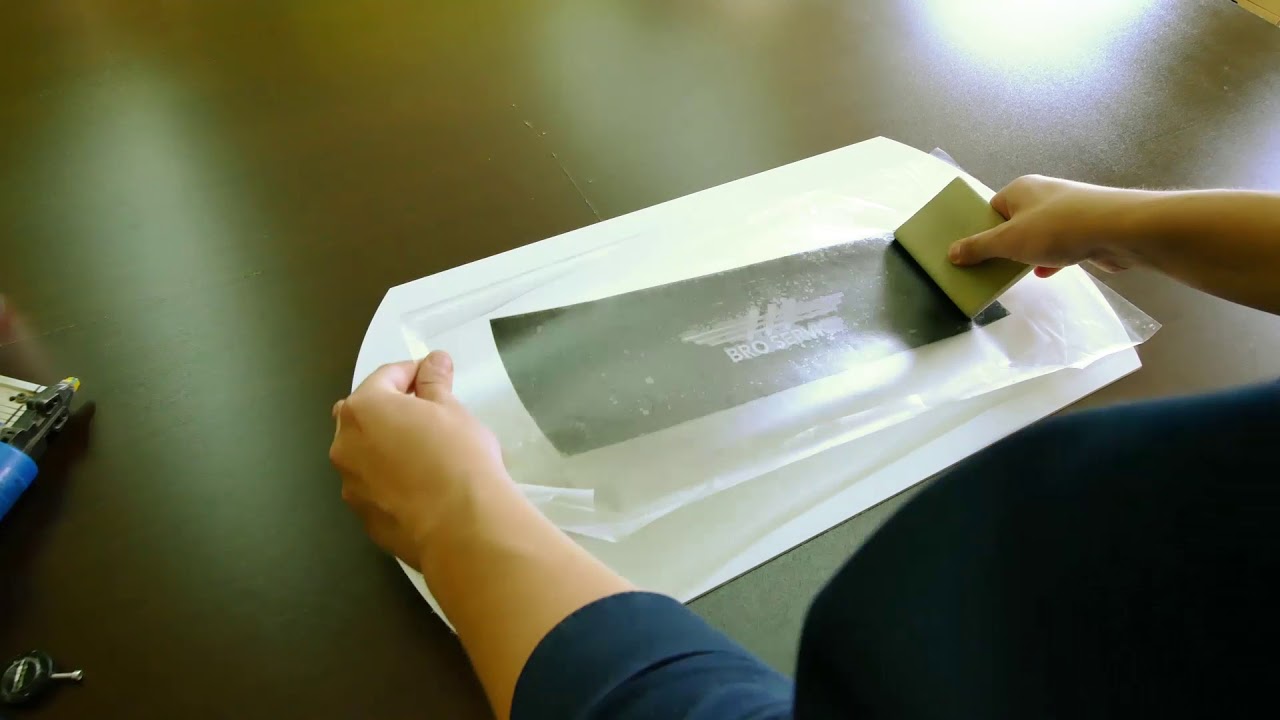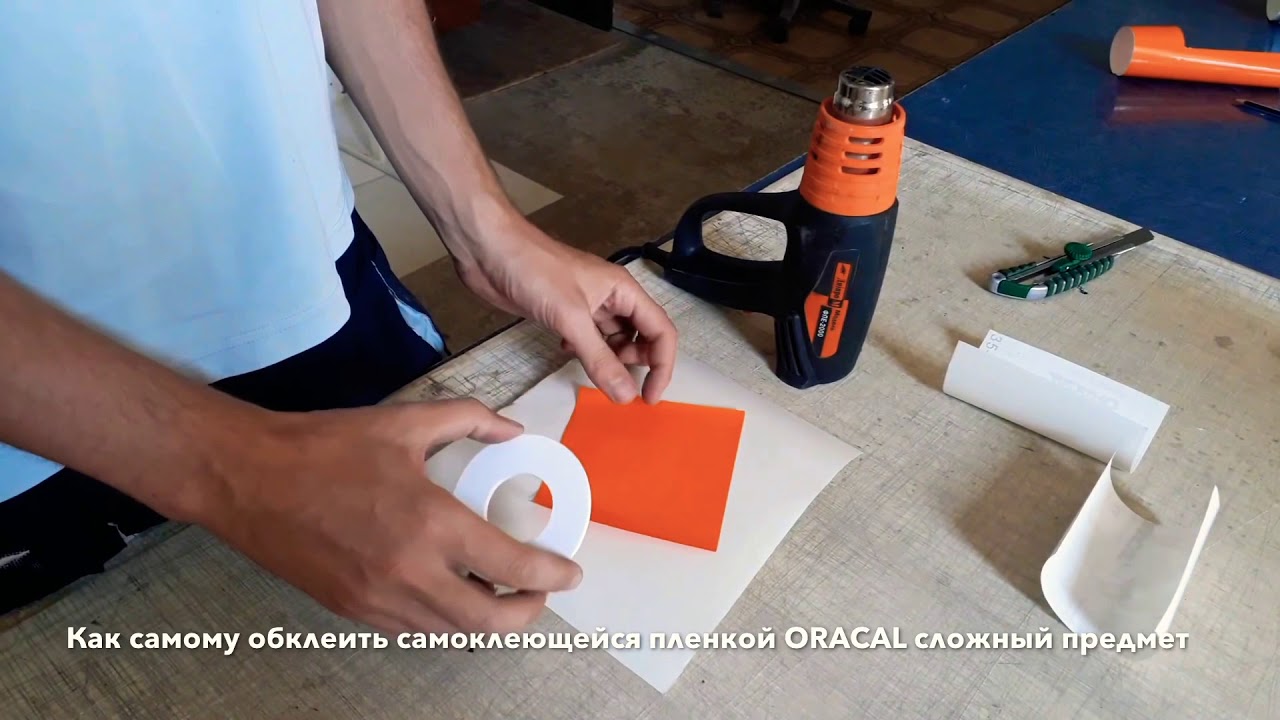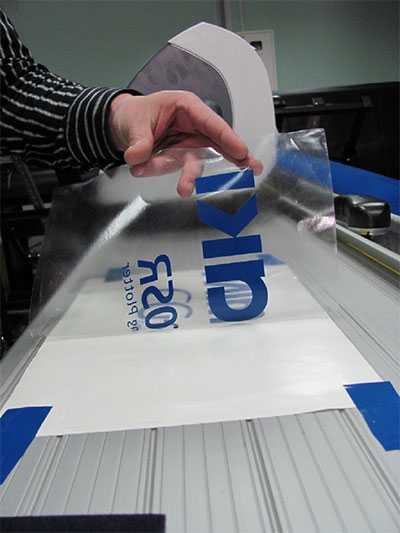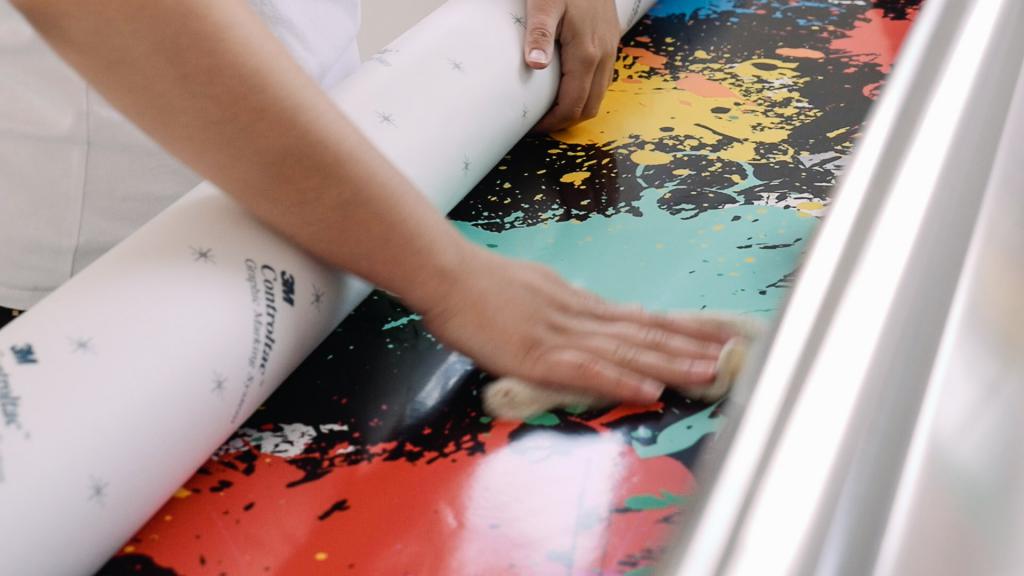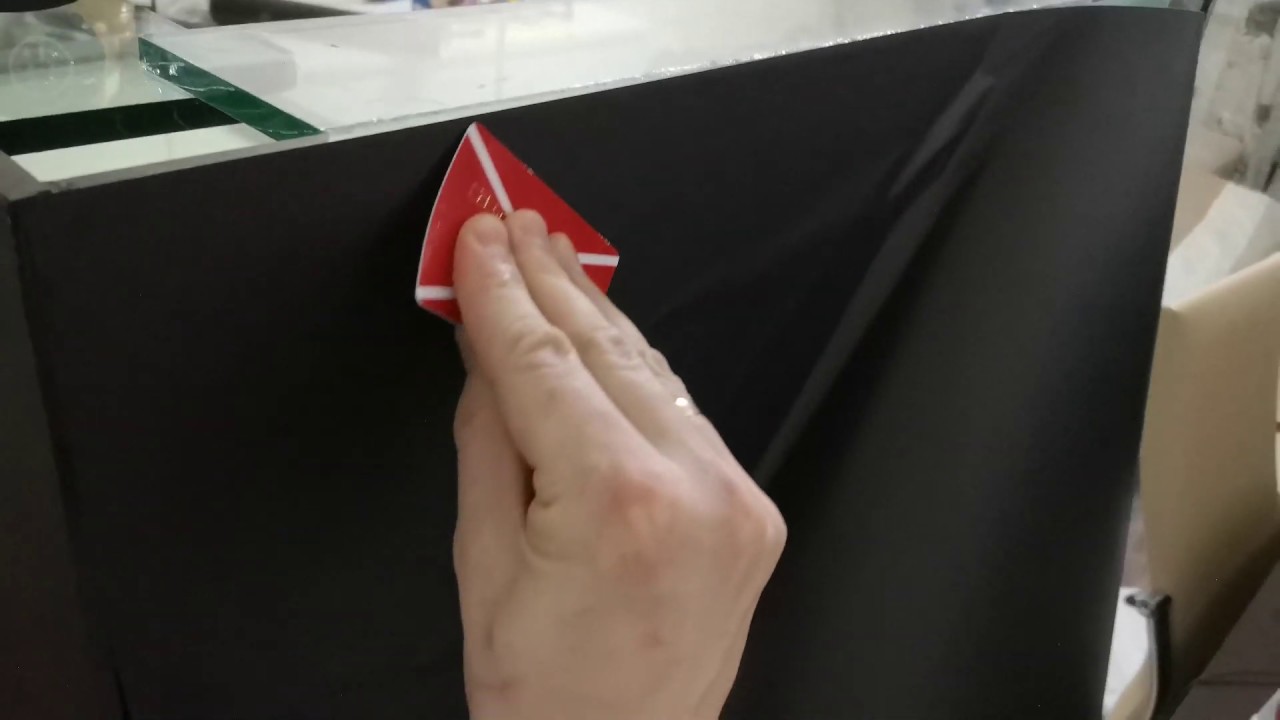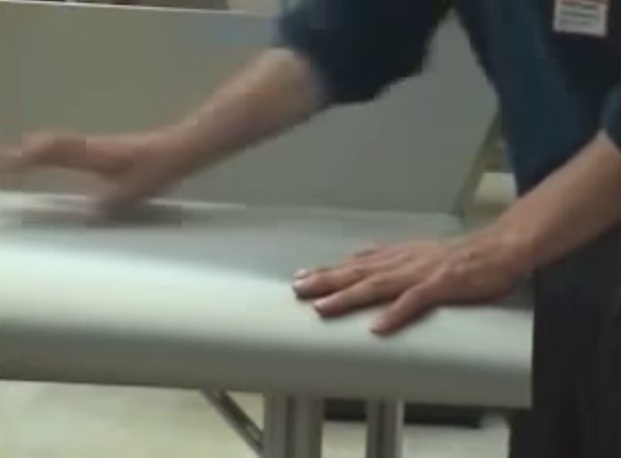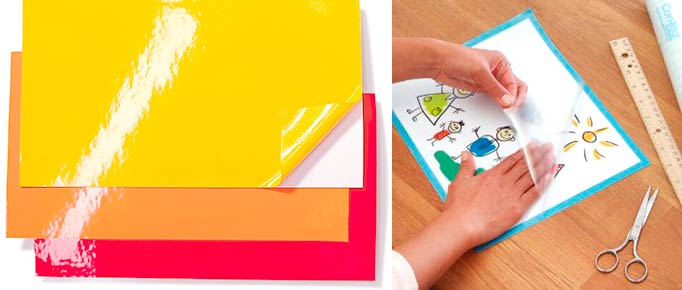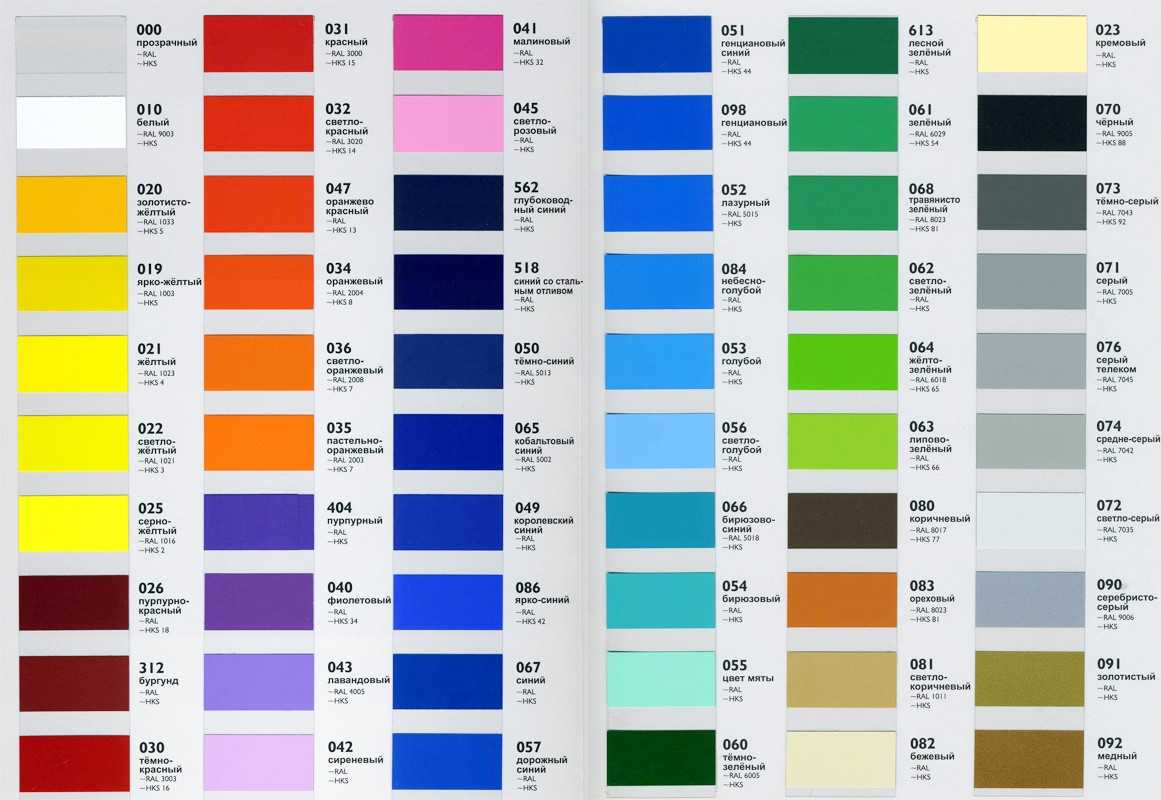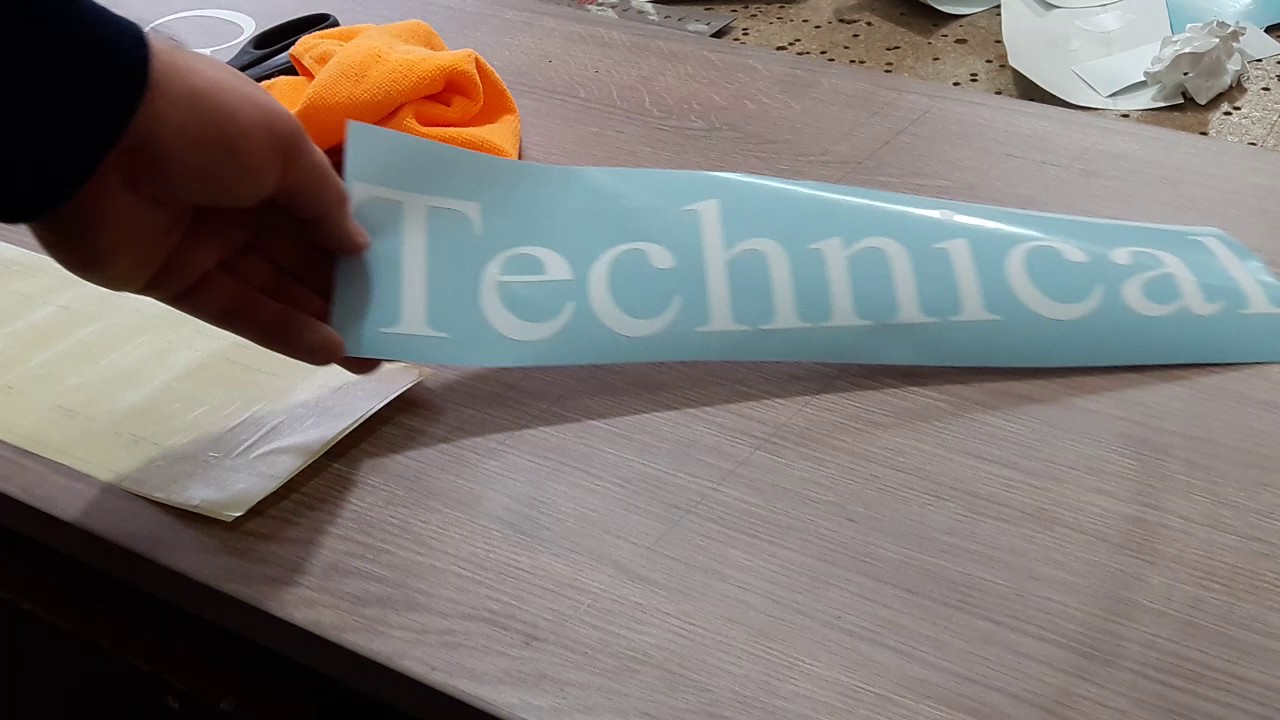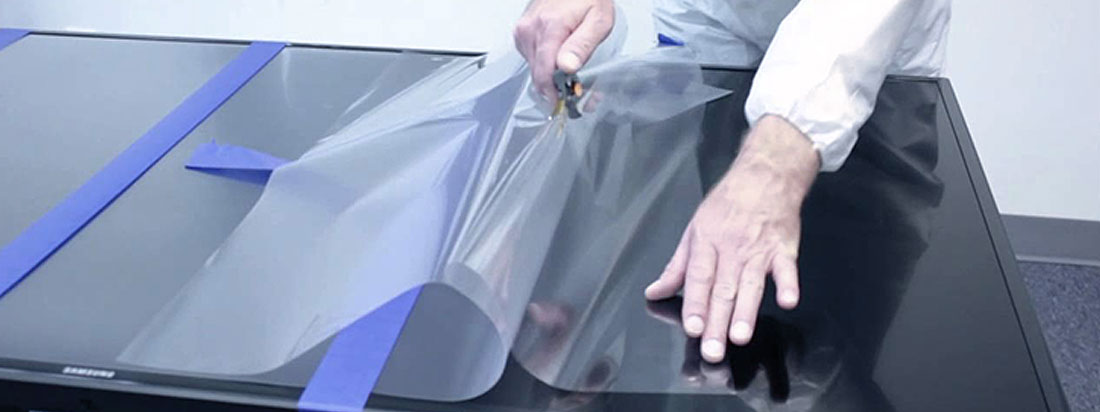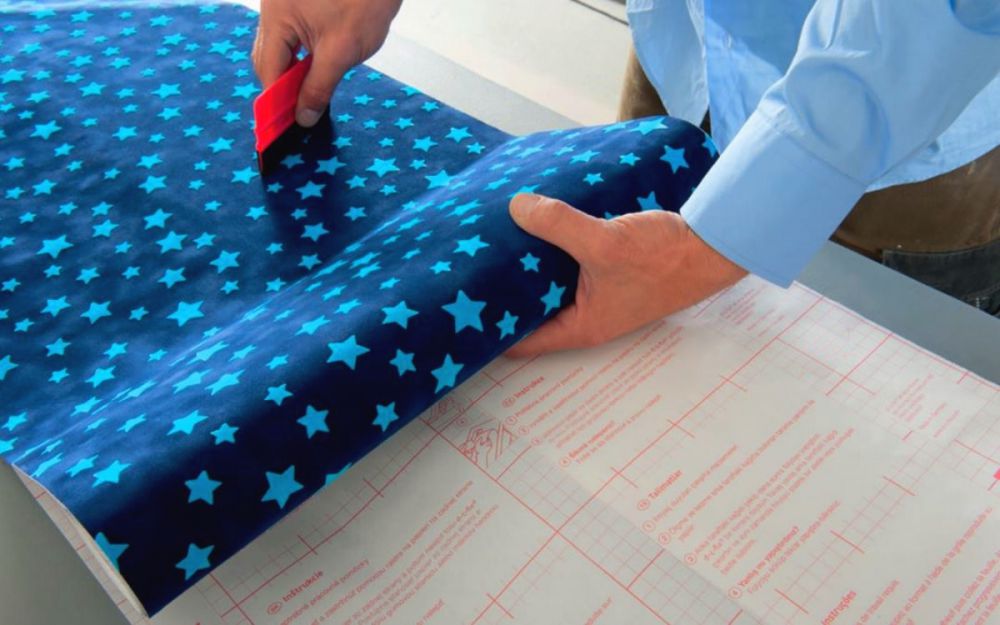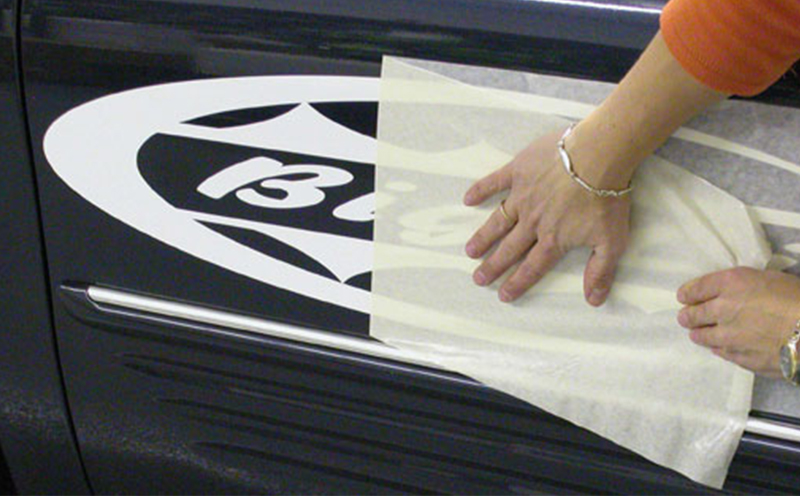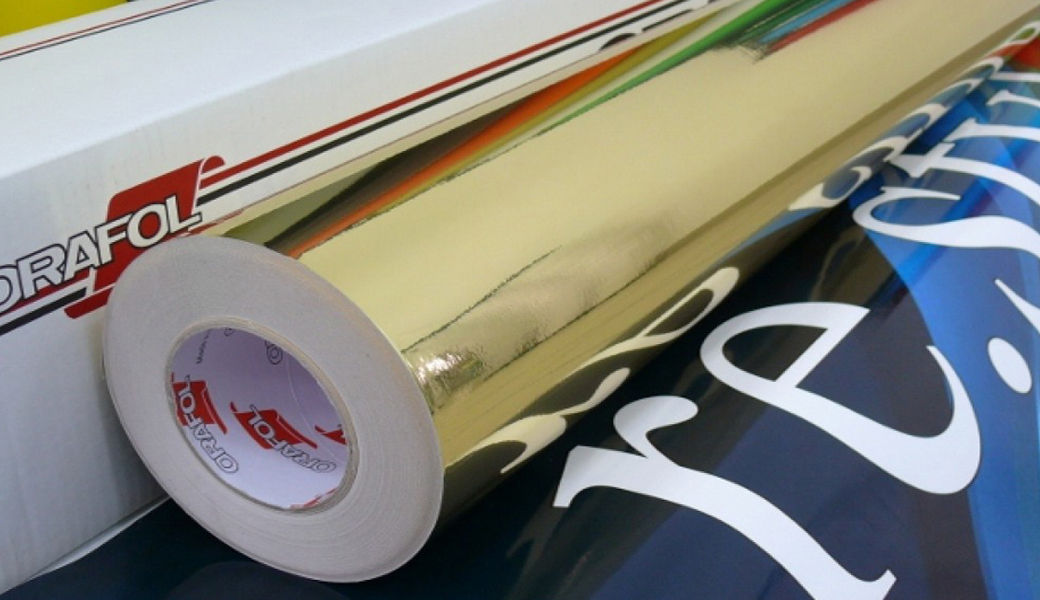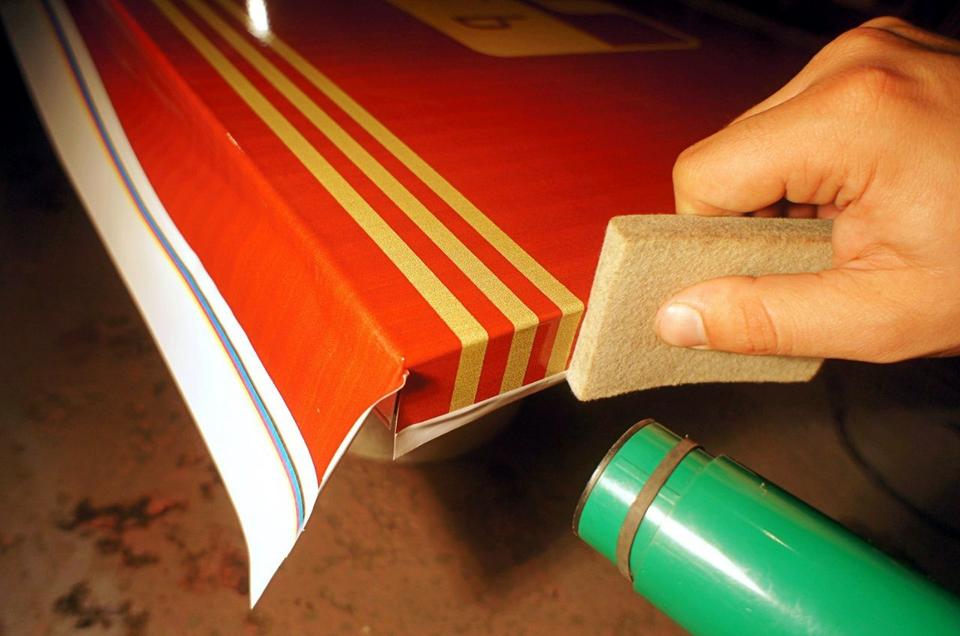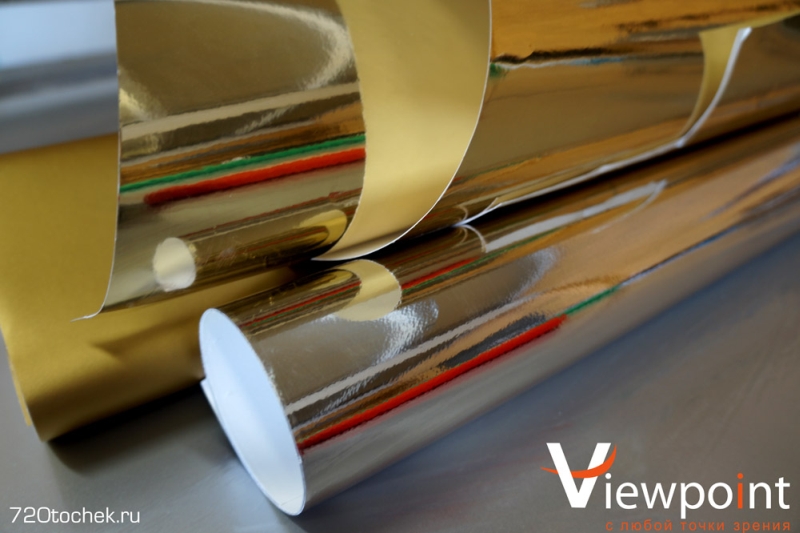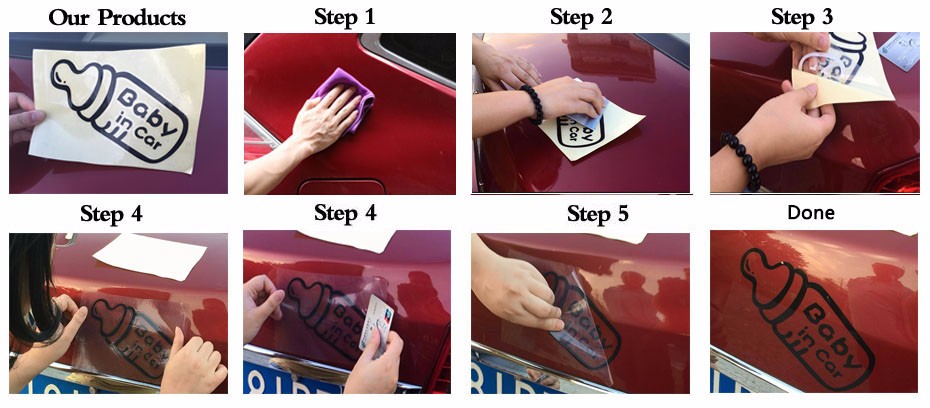Where is it used?
The scope of application of oracal films is very extensive. Simple advertising and information materials are made from economical options: stickers on glass and mirror surfaces, on doors and walls. Interior films are used to decorate walls and furnishings. They lend themselves well to cutting with a plotter, they are attached with magnets to any metal surface. A sliding wardrobe with an oracle applique takes on a designer look. In addition, with the help of a film, interior doors, screens, partitions are often decorated. Oracal is well suited for printing images using offset or screen printing, silk-screen printing, flexography.
The film is used in advertising - when applied to vehicles, including buses and trolleybuses. Matte and glossy options are selected based on the requirements for use. Light-scattering films are used to create special advertising structures, ensure their visibility in any lighting. Self-adhesive metallized polyester film for plotter cutting works well for printing or as an appliqué backing. With its help, stickers, cut symbols and other elements used for decoration or are of an informational nature (plates, labels) are made.
The fluorescent oracle is used mainly where the visibility of the applied image is required in any light. It is used to make identification marks for specialized vehicles and equipment. Stained glass products are suitable for decorating windows and glass structures.
Thanks to the transparent structure, light transmission is not lost. This decor allows you to achieve an original interior design, is well suited for commercial objects, and is easy to apply. Oracal mounting film is used for stickers, helps to transfer them to the surface of glass, car body, display structure.
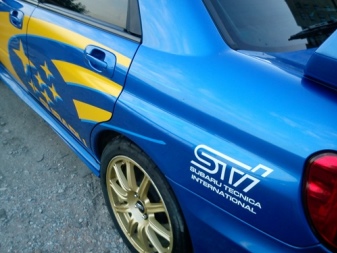
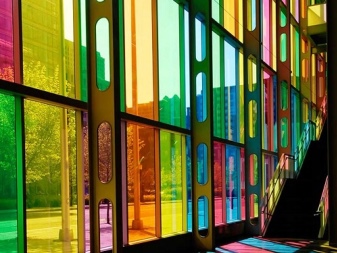
Preparation - in what conditions and at what temperature to glue the film oracal
It should be borne in mind that the physical properties of the film depend on the temperature conditions in the room. Ideally, work with Oracal should take place at a temperature of + 10-30 degrees. At low temperatures, the film loses its elasticity, at high temperatures it becomes too soft.

Temperature requirements also apply to the surface to be glued.
Moreover, to achieve the best result, it is recommended to expose the film to temperature changes no earlier than 24 hours after the end of the work.
Before applying the film, the surface must be cleaned of dust and dirt and must be degreased. Too aggressive or oily solvents are not suitable for these purposes. Ethyl or isopropyl alcohol is preferred, and regular vodka will do.
You should also clean up all the smallest protrusions and irregularities on the surface to be pasted, since they will all be visible under the film.
To carry out work on rolling vinyl film, you will need the following tool:
- squeegee - a plastic, rubber or felt squeegee for the application of films,
- stationery knife with replaceable blades,
- household water spray.
Correctly glue the oracle on plastic and glass - step-by-step instructions
There are two ways to apply vinyl film:
- "Wet" (with water);
- "Dry" (without water)
Experienced craftsmen work with "dry" technology. This is a more reliable way, but to glue the oracle smoothly and without bubbles, you need skill.
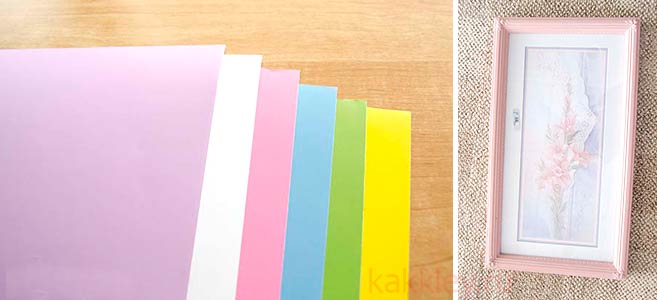
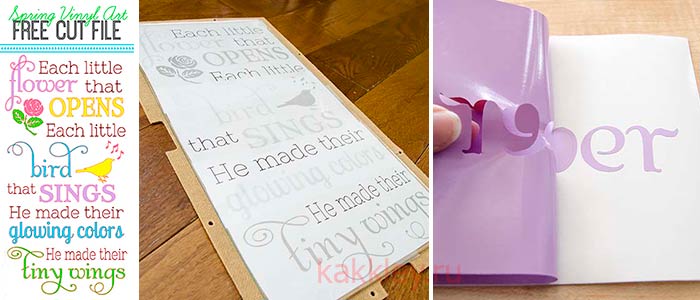
For beginners, we recommend that you first fill your hand, adopting the "wet" method, since it allows you to move the film over the surface during work, adjusting its position.

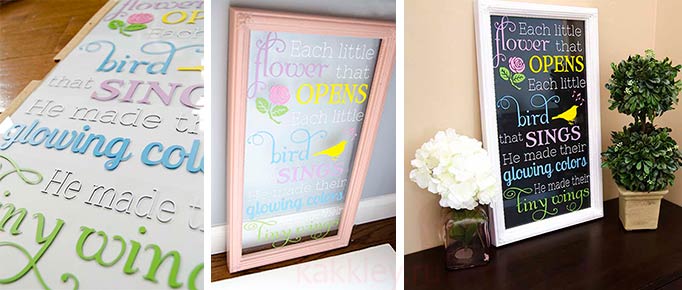
Detailed instructions for gluing the oracle to plastic, glass or other smooth surface using water:
- We clean and degrease the surface to be pasted;
- We cut out the film, leaving 2-3 cm in reserve on each side;
- Using a household spray, evenly apply a small amount of warm water or a mild soap solution (water + 2% liquid soap) to the work surface;
- Carefully peel off the backing of the film, while sprinkling the adhesive base with soapy water;
- We apply the oracle to the damp surface so that the film lies as flat as possible;
- Correct the position of the film if necessary. The final result depends on the accuracy of this operation;
- Moving from the center, we expel liquid and air bubbles with a squeegee to the edges, holding the material. This is the most crucial moment, so you should be extremely careful, smoothing movements must be done several times;
- If you use (have) the mounting tape, remove it with a smooth motion.
VIDEO INSTRUCTION
Important nuances - working with corners
On an industrial scale, the film is rolled onto large surfaces using special equipment - applicators. In this case, the film adheres perfectly evenly due to the uniform pressure of the roller.
When working by hand, special attention should be paid to corners and edges
So that the edges of the film do not peel off and wrap over time, several hours after rolling, it is recommended to carefully go through the squeegee again around the entire perimeter of the oracle, applying proper effort.
Some useful tips for rolling on self-adhesive:
- If, when smoothing the film, it is not possible to expel the air bubble, it is not necessary to press with force, it is not necessary to deform the oracle. It is enough to pierce a small hole next to the bubble with a thin needle and expel air through it.
- When choosing an oracle, it should be borne in mind that cheap films for the most part do not differ in high density. If the self-adhesive is very thin, all defects of the glued surface will be visible under it (scratches on the metal, stains, wood texture, etc.).
- Small radii and slightly convex surfaces are recommended to be pasted over with heated foil. For these purposes, you can use a regular hair dryer.
- The time for pasting can be shortened, and the quality can be improved if an assistant is connected to the work.
How to glue oracal film
The material adheres perfectly to any surface:
- glass;
- plastic;
- metal;
- wooden;
- painted;
- concrete;
- acrylic, etc.
Then the place of pasting must be wiped off. For this, solvents are used - isopropyl alcohol, anti-silicone. You can use pure vodka or ethyl alcohol.
There are two ways to apply the film:
- with water;
- dry method.
Tools required: squeegee (scraper), office knife, water spray.
For those who have not yet gotten their hands on gluing the oracle, it is recommended to use the water method. It allows you to correct the film, eliminates bubbles and unevenness. You can use soapy water.
The liquid is applied to the surface. You need to start gluing from the central part, moving towards the edges. Blisters and wrinkles are removed with a squeegee. It is not necessary to press down on the tool so as not to damage the surface. The bubble can be punctured with a thin needle, removing air from it.
The glue can dry for up to 3 days. It depends on the weather conditions. If the work takes place in a room where there is a ventilation system, then it will be necessary to check the sticker the next day, as the edges of the film can move away from the surface due to exposure to air. In this case, you will need to go through the squeegee again and press the film against the base.
The dry method is used by experienced craftsmen. Part of the vinyl is freed from the backing, with which it was decided to start gluing. A comfortable edge is usually chosen. It is pressed against the surface and smoothed with a squeegee. You need to move to the center, slowly, gluing 1-4 cm of the oracle.
Oracle remains the most demanded material in advertising and design activities. There is no alternative to it yet.
Manufacturers overview
Oracal film is a registered trademark owned by Orafol Europe GmbH. It is the only official manufacturer authorized to sell products with this name. However, the name itself managed to spread among designers and became a household name. Today, almost any PVC film with an adhesive backing can be unofficially designated this way.
In addition to Orafol, large brands include the following companies:
- Japanese 3M;
- Chinese Promo Film;
- Italian Ritrama;
- Dutch Avery Dennison.
On sale, all of these films can be presented as vinyl. It should be noted that European manufacturers always focus on the quality and reliability of their products. The average service life of Oracal branded film reaches 3 years with the most intensive use.
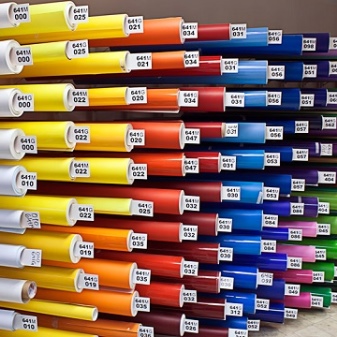

Asian brands later started production but quickly caught up with their competitors. Today, even eminent designers use Chinese vinyl products, paying tribute to its variety and design. Orafol, which owns the Oracal brand, is an internationally recognized company headquartered in Berlin. The company traces its history back to 1808, its modern name has been since 1990. During the XX century, the company was called Hannalin GK, later - VEB Spezialfarben Oranienburg. Since 1991, it has been privately owned; in 2005, a representative office was opened in the United States.
For a long time the company specialized in the production of paints for the printing industry. As a leading manufacturer of film materials for design and advertising, it began to position itself after 2011, after the acquisition of the American Reflexite Corporation, which produced ORALITe, Reflexite. Since 2012, ORACAL A.S has become part of the Orafol group of companies. Today, this division is based in Turkey.
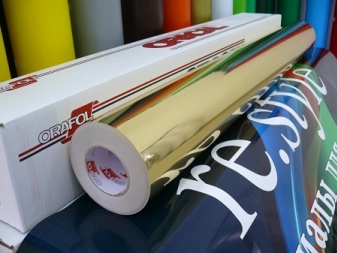

Usage Tips
The use of the oracle film implies the observance of a certain sequence of actions. To create appliqués, a plotter is used - a special tool that allows precise cutting. Self-adhesive rolls are used in bulk, often with an image already printed on it. Plotter cutting is used only to obtain curly parts.
You can glue the film on the following surfaces:
- glass;
- metal;
- wood;
- concrete and brick;
- plastic;
- building boards and plywood.
Before pasting, any base must be carefully prepared. It is cleaned of dust, dirt, roughness, it is recommended to clean it, remove greasy deposits with solvents or alcohol solutions.
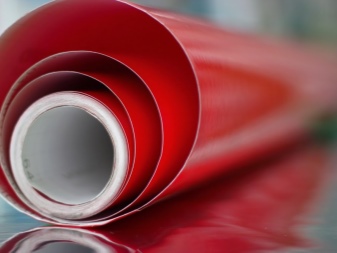

To carry out the work, you will need a sprayer with clean water, a scraper or squeegee, a stationery knife for cutting. Let's consider the order of actions.
- The prepared and cleaned surface is moistened.
- The film is peeled off from the substrate.
- You need to mount the coating from the center to the edges. The squeegee smoothes out wrinkles and creases. You need to work with the tool carefully, avoiding strong pressure.
- Having completely flattened the sheet on the surface, the film is inspected for air bubbles. If they are found, punctures are performed with a sharp needle.
- With a wet method of application, the oracle can be corrected, glued. Average drying speed at room temperature is 3 days. If there is a forced ventilation system in the room, check the tightness after 1-2 days. If you find areas extending from the surface, you will have to re-iron the film with a squeegee.
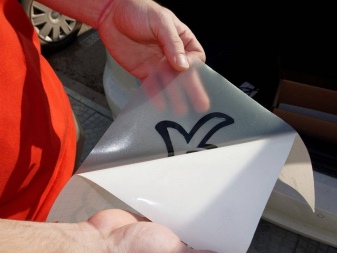
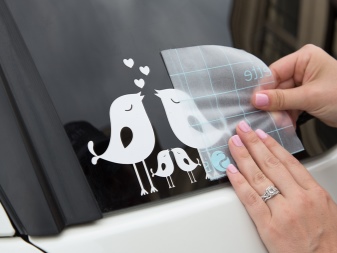
With the dry method, the vinyl covering is gradually released from the backing. Bonding starts from 1 corner, you need to move gradually, freeing no more than 1–4 cm of the oracle at once. The film should be kept slightly taut, pressing it to the surface. This method is good for appliqués, but does not allow you to change the position of the stickers if they have already adhered to the coating.
For information on how to properly glue the oracle film, see the next video.
Names, characteristics
Oracal consists of three layers: plasticized PVC, an adhesive layer and a backing. The property of the material and the direction of application depend on their composition.
Oracle 641
Used to decorate various surfaces. It is used for decoration work both outdoors and indoors. Resistant to weathering, does not fade in direct sunlight. Oracle 641 can be matte and glossy.
In the first version, it is used for interior decoration, advertising stands design. Gloss is used to draw attention to advertising, which is facilitated by its reflectivity.
Oracal 641 has the following characteristics:
- Withstands temperatures from - 40 to + 80 ° С;
- Roll length - 50 m;
- Thickness - 0.07 mm;
- Has two standard widths: 1 m and 1.26 m;
- The service life in the premises is not limited, in outdoor conditions about three years.
Oracal 641 is recommended to be glued at temperatures from + 10 ° С and above. Has a wide palette of colors - up to 60 shades.
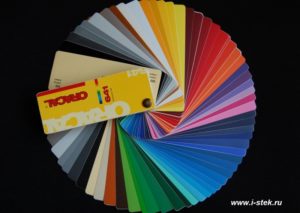 Palette Oracle 641
Palette Oracle 641
Oracle 8500
Refers to the translucent type. It is used for interior decoration, production of advertising projects. Often the film can be seen on light boxes, signs, volumetric letters. The surface of the film is non-reflective due to its ability to absorb sun glare. The light is distributed evenly. Well resistant to weather conditions and ultraviolet radiation.
It has a translucent structure and a silky surface. The color palette is presented in 55 shades.
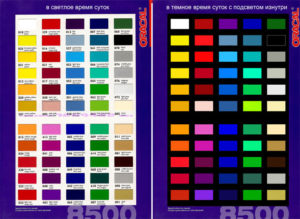 Palette oracal 8500
Palette oracal 8500
Oracle 8300
It is used for illuminated advertising of shop windows or backlit stained glass windows. Presented in 32 shades of color. It is possible to obtain an intermediate tone by overlaying color films. Has a high level of strength.
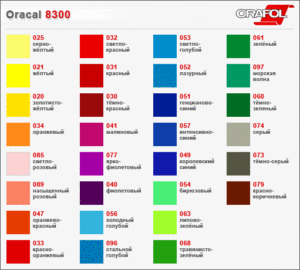 Palette Oracle 8300
Palette Oracle 8300
Fluorescent film oracal 6510
The material has a semi-glossy surface. Well visible in the dark. Used to attract attention. Limited in color gamut, presented in only 6 shades. It is used for registration of transport, designation of markings, production of plates and signs. Used in the design of entertainment venues.
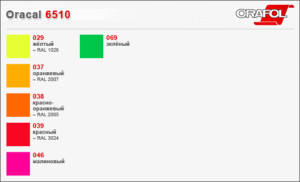 Palette Oracal 6510
Palette Oracal 6510
Oracal 970
Designed for outdoor use, in particular for pasting vehicles, including racing cars. Very durable. Withstands temperatures from -50 ° С to + 110 ° С. Resistant to oil, grease and alkali. Available in 36 glossy colors, with a matte finish in three colors: white, black and saffron yellow.
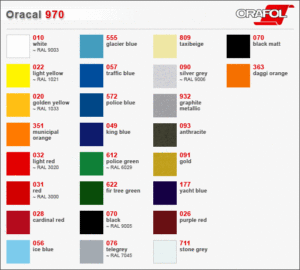 Oracal 970
Oracal 970
Oracle 551
It is used to design advertisements on cars and other vehicles. Usually used in lettering. It is presented in gloss in 98 shades, with a matte surface in only two colors: in white and black. It tolerates the effects of the atmosphere well, does not fade under the sun's rays.
Oracal 551
Oracal 951
Has a mirror-glossy surface. Available in 49 metallic colors and 97 high-gloss colors. It is used for outdoor applications, most often for advertising on vehicles. Withstands the effects of weather at any time of the year. Calmly tolerates extreme temperatures of -50 ºС. It does not lose its properties even at very high temperatures above +100 ºС. It is used for difficult and uneven surfaces.
Oracal 951 palette
Characteristics and markings
Oracal films are marked with the letter name of the trade mark and numbers indicating the series to which the product belongs. The dimensions of the roll material depend on its width. Usually it is 1 m or 1.26 m, the length of rolls is always the same - 50 m, in sheets it is sold at parameters 0.7 × 1 m.Oracal film density varies depending on the series, its substrate has an indicator of 137 g / m2 , made of siliconized paper. Thickness - from 50 to 75 microns, thin versions are more often used for surfaces with a large coverage area.
PVC films for plotter cutting may have certain designations.
Oracal 641.The most popular and affordable film, the economy version, has up to 60 color variations. It can have a matte and glossy surface, varying degrees of transparency. Especially popular when decorating mirrors and furniture.




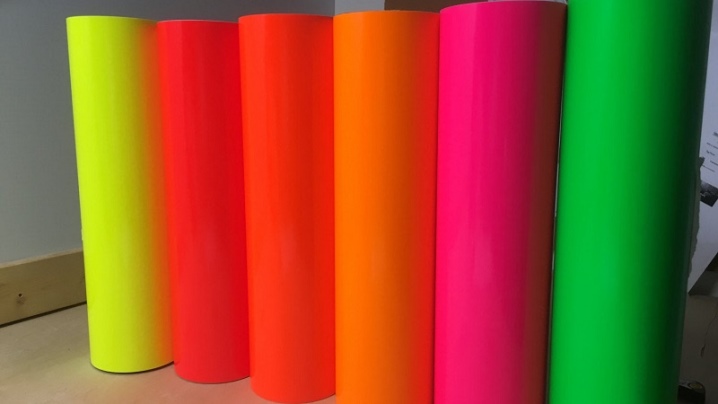
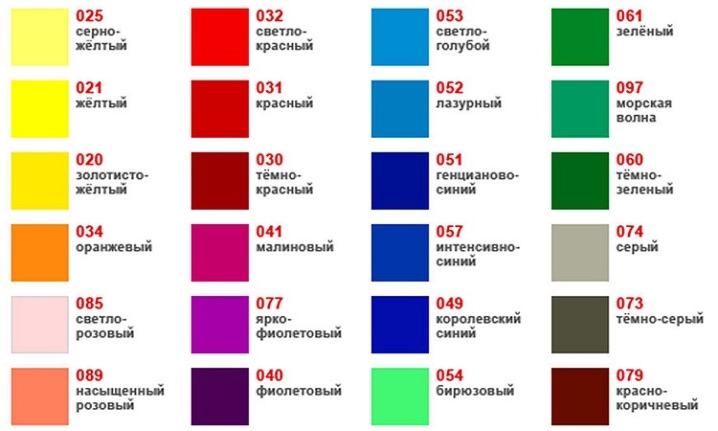
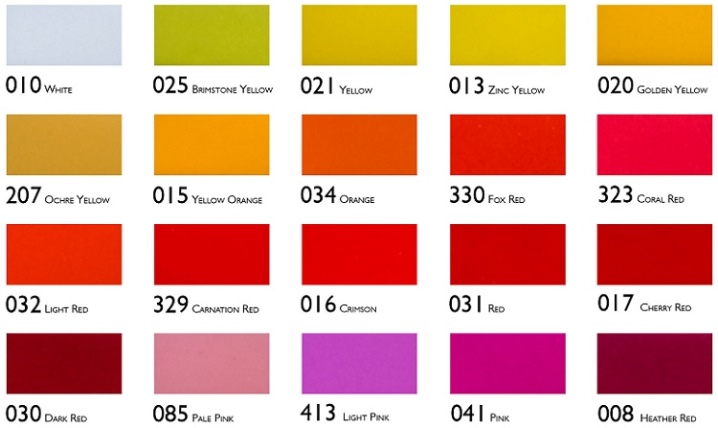


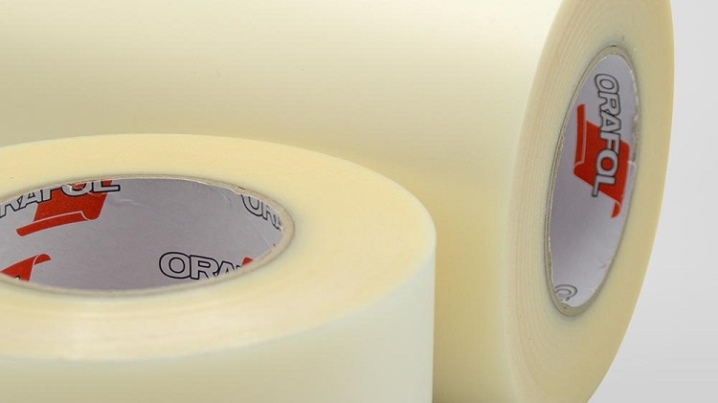
Varieties
All kinds of oracal self-adhesive films can be divided into categories. The main division is carried out according to the type of coverage. Gloss is used in the manufacture of vinyl decor elements, matte options can be used in auto tuning and other areas. By the presence of pigment, transparent and colored films are distinguished. Both options are suitable for printing a variety of images and text on their surfaces.
Special varieties are focused on a narrower application. For example, reflective or light-scattering films are successfully used in the advertising industry in the manufacture of light boxes, signage, display cases with minimal energy consumption. Fluorescent applications are clearly visible on the sides of vehicles, in the beams of headlights - they look brighter in artificial lighting.
Cast
Films of this type are products of increased strength, resistant to stretching. The range of thicknesses is higher here - from 30 to 110 microns, glossiness reaches 80-100 units. The equipment for the production of film is small, the mixture is prepared in portions, which determines broader opportunities for the manufacture of decorative products with an original texture.
During casting, the PVC mixture is fed directly onto the surface of a special paper that sets the texture. This film can be embossed, textured, matte and glossy. Oracal of this type is well compatible with uneven surfaces, is not afraid of temperature extremes. In some cases (for destructible control labels, warranty seals), easily destructible materials are made, but usually their tensile strength is quite high.
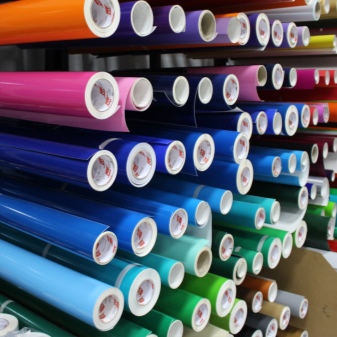

Calendered
This category includes all economy grade films made from vinyl chloride resins. They have a thickness of 55–70 microns, shrink when operating temperatures change, and do not withstand significant stretching. During production, the molten base mass passes between calender rolls, stretched, embossed, cooled and wound into rolls. Already at the entrance to a special machine, the width and thickness of the future material are set.
In terms of glossiness, the range of calendered films is 8–60 units. Oracal of this type is not suitable for pasting complex curved surfaces. But it is as easy to use and cheap as possible in comparison with cast analogs.
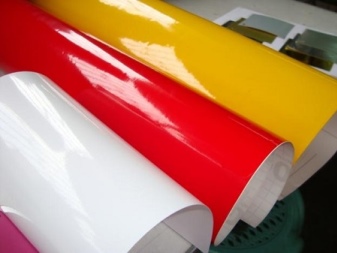

Color palette
The color palette of the oracle largely depends on the method of its production. The most popular version - Oracal 641 - has 60 color variations: from transparent to black matte or glossy. Among monochrome options, white or gray colors are also popular. Metallized films have been placed in a separate category; there are finishes for gold, silver, bronze.
Among the cast types, you can find an oracle with an original surface texture: wood, stone, and other materials. Self-adhesive films of pure bright colors are popular: blue, red, yellow, green. Calm shades - beige, peach, pastel pink - are used in the design of furniture facades.

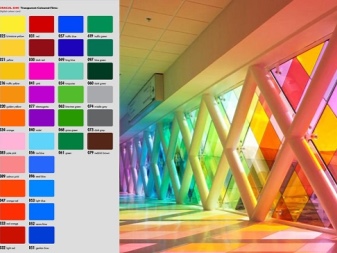
Types of vinyl films
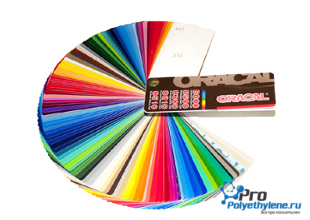 The idea of all self-adhesive films is that an adhesive composition is applied to the paper base, which easily allows you to refine the surface of any shape. And the top layer is made of polyvinyl chloride, the desired pattern is applied to it, with an assortment of colors (60 shades). This film is presented in both matte and glossy versions. Oracal 641 film has a long service life - white and black colors will last up to four, and the rest - up to three years when applied externally. If the film is used indoors, then its service life is practically eternal.
The idea of all self-adhesive films is that an adhesive composition is applied to the paper base, which easily allows you to refine the surface of any shape. And the top layer is made of polyvinyl chloride, the desired pattern is applied to it, with an assortment of colors (60 shades). This film is presented in both matte and glossy versions. Oracal 641 film has a long service life - white and black colors will last up to four, and the rest - up to three years when applied externally. If the film is used indoors, then its service life is practically eternal.
Oracal 641 soft calendered PVC film has a thickness of 75 microns and is waterproof, resistant to many detergents, oils, greases and mild acid and salt solutions. The scope of this film is wide - almost all areas of outdoor and indoor advertising, shop windows, stands, exhibitions. You can print on it using both screen printing and offset printing. Also, Oracal 641 film is suitable for plotter cutting and the image can be applied to the glossy version using thermal transfer printing.
Preparing the film itself for work
Before applying the Oracal film, you need to carefully separate those parts of the image that will be needed in the work from the unnecessary background cut by the plotter. For these purposes, use scissors or a breadboard knife. You can remove excess film in different ways, as it is more convenient for anyone. Some people start from the upper right corner, moving diagonally downward (this method is especially convenient for the letters E, C), some find it convenient to start from the center of the image. In general, everything here is determined directly by the layout designer.
You need to act carefully, especially if you are dealing with a large lettering or logo. You can gradually remove parts of the film by trimming the layout with scissors. Alternatively, make preliminary cuts with a scalpel (without damaging the substrate), which will greatly facilitate working with a large image.
Vinyl adhesion surface
As already mentioned, this self-adhesive miracle can be determined on almost any plane, for example:
- painted surfaces;
- glass and stained glass;
- volumetric surfaces;
- plastic, acrylic;
- wood;
- concrete;
- aluminum;
- polystyrene;
- polycarbonate, etc.
Any surface, before applying vinyl film on it, must be carefully prepared: it is necessary to remove traces of grease, dirt, dust from it, as well as smooth out all small cracks, scratches and other imperfections as smoothly as possible (any unevenness will stand out on the film, spoiling the overall impression ). A surface ready for decorating with a film is only one on which there is already a protective film, for example, acrylic, PVC, polycarbonate or composite, but even these need to be wiped off to get rid of a possible dust or grease layer.
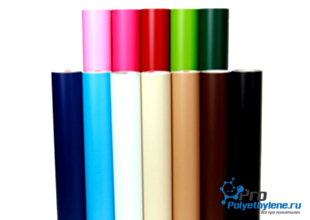 Special solvents are used to clean the surface.
Special solvents are used to clean the surface.
You should also refrain from household detergents. It is preferable to use isopropyl or ethyl alcohol, in extreme cases - vodka. Before you start working with the product, read the instructions.
What is "Oracle"
"Oracal" (the name comes from an American company) is, as noted, a self-adhesive film. The product is made of polyvinyl chloride (vinyl), one side of which is coated with a specialized compound. The name "Oracal" is used for any self-adhesive films made of the specified material, regardless of the brand of the product.
Depending on the production technology, this product is divided into 2 types:
- Calendered. Such material is prone to shrinkage. Therefore, it is glued only on flat surfaces. The production technology allows the production of "Oracal" in a limited range of colors.
- Cast. In the production of such a film, the raw material passes through special rollers. Cast "Oracle" is distinguished by elasticity, due to which it does not shrink.
One layer is impregnated with water-based glue or with a special solvent. The service life of "Oracal" in the external environment is 3 years, indoors - unlimited.
The scope of this film is extensive. The material is used for:
- elimination of defects on the car (including glass);
- advertising (mainly fluorescent film is used);
- signage design (matte or glossy material is used);
- registration of transport and other metal surfaces;
- transfer of images to surfaces and other purposes.
The popularity of "Oracal" is due to the fact that the film is not only easy to stick, but also does not fade in the sun, it tolerates temperature changes well and does not let water through.
Application "dry"
This is a more complex method that requires skill. Initially, the film must be laid out on the material, clearly along the contour, so that the edges coincide. If the layout has been cut, then you can draw contour lines, which will simplify the work in the future. The Oracal film must be firmly pressed against the material, then you can avoid the movement of the pattern. Further, that part of the vinyl with which you start working literally 5-10 cm is freed from the backing, and the open part is glued to the material.
So continue to move from the center, without lifting the squeegee from the vinyl, slowly, roll 1-4 cm of film in one motion. When peeling off the backing, you can roll it into a roll, this will give additional tension and facilitate work (helps to avoid the formation of air bubbles)
It is important that the main part of the working surface of the film should be at an acute angle relative to the surface, in a slight tension

